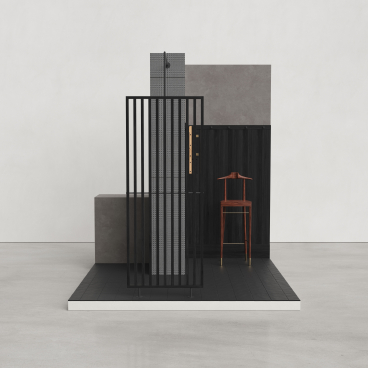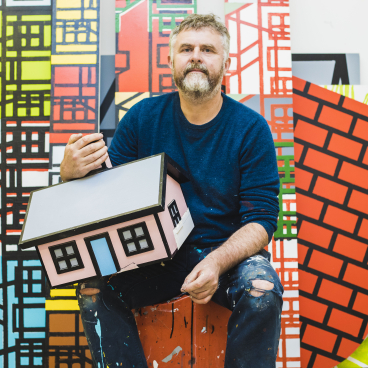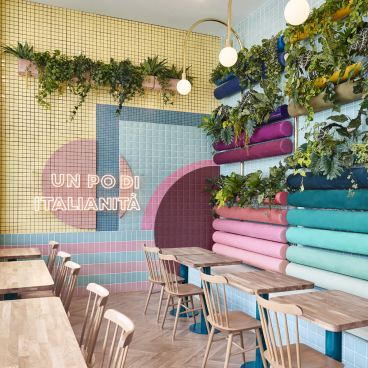Erez Nevi Pana on innovative, 'guilt-free' materials and creating vegan furniture from the Dead Sea
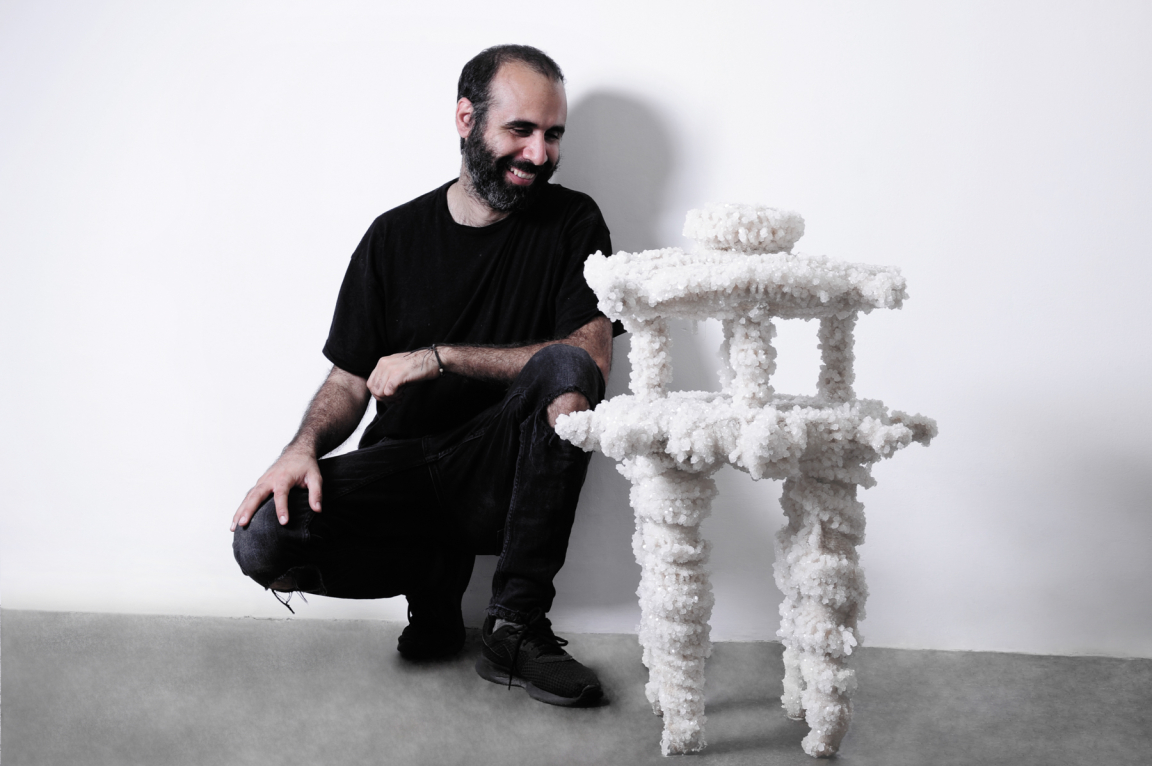
Erez Nevi Pana. Photograph by Claudia Rothkagel
Is it possible to create furniture from plants and minerals and avoid using any kind of material derived from animals? Israeli designer Erez Nevi Pana seems to think so. He introduced "guilt-free" vegan furniture at this year's Milan Design Week, showcasing his experimentation with natural resources.
We especially love his Salts and Bleach collections, ranges of furniture made from the crystallisation of salt in the Dead Sea. We spoke to Erez about this, the importance of sustainable materials and much more.
Tell us about this series. What inspired you to experiment with sea salt?
I started working with salt in the second year of my Masters at the Design Academy Eindhoven. I had to write a thesis and I wanted to work with something related to my homeland. The idea was to complete a theoretical part that would lead to a design proposal.
I arrived back home during the summer and decided to visit the Dead Sea. It was there when I saw a mountain of salt neglected in the middle of the desert. I became aware of the fact that the "white gold" had lost its value and the starting point of the research was — what can I do with a mountain of salt?
On further inspection, I discovered that the salt was waste from the manic production line of potash and bromine in the Dead Sea factories. In addition to this mountain, every year 20 million tons of salt sinks to the bottom of the Dead Sea’s fifth pond, which for me was a great supply of free material that nobody wants, a pure material that is just waiting there to become something.
Since then, I've been experimenting with salt and suggesting different applications, some are practical like tiles and blocks made out 100% pure salt, and others are more conceptual. The Salts and Bleached objects are part of my more artistic and conceptual work. Both were made in the same technique in which I’m dipping objects in the Dead Sea water.
In Salts, I collected scraps of wood that were found in garbage cans of carpenters' workshops and constructed stools that were joined with a vegan glue I produced. The glue wasn’t a great success, it last only for a few weeks, the salt that crystallised around the object strengthened the ties and acted as a skin that holds the stool together.
The Bleached series was made for my first solo show at Friedman Benda in New York City. In this collection the wooden structure is covered with luffa – the sponge-like material soaks up the salt and the object is acting as a "salt pump" that absorbs the sodium chloride which is left behind off-balanced. Basically, the fibres of the luffa are a source of suction, they become habitats for the growing crystals.
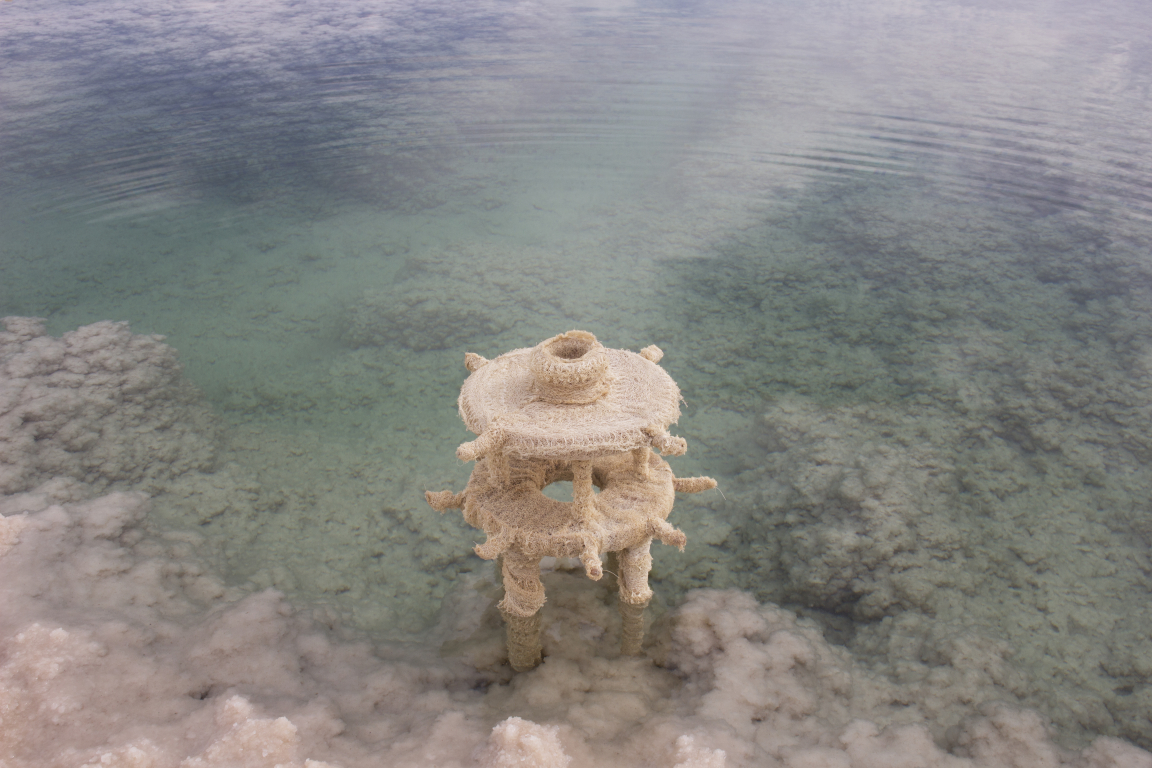
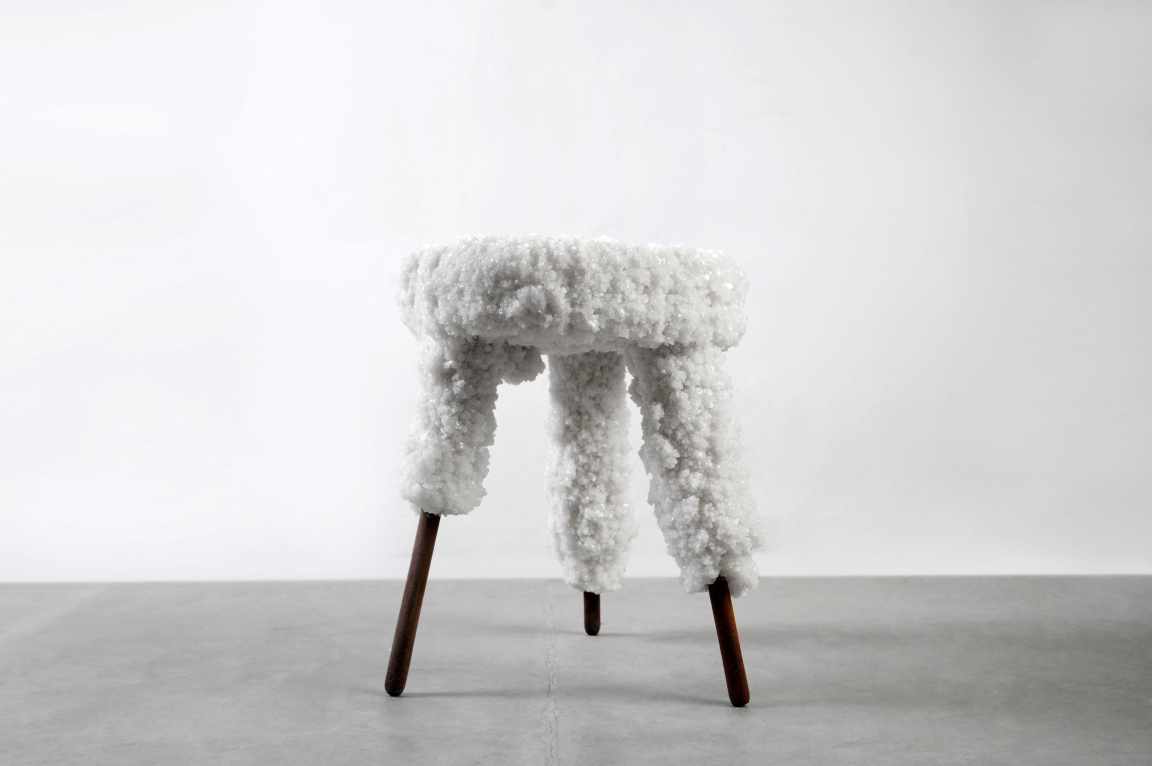
Of course, being vegan, isn't just about the food
Of course not, it affects all aspects of life, animal exploitation has been adopted in so many aspects of our lives, and without the awareness of it, one can’t have a free choice. As well as my diet, I’ve changed my clothes and my design practice. My approach towards pets has also changed and I'm more aware of other environmental issues thanks to my vegan lifestyle.
Animal ingredients are assimilated in most of the products we use in one way or another – gelatin binder, bone glue among other animal-derived ingredients are mixed into materials and products that we fail to recognise or link to the exploitation of animals.
As a designer I find myself observing, testing and discovering so many materials and products that are not vegan – cardboard, sanding paper, paint rollers, glossy paint, crayons, chalk, wood wax, canvas, rubber, certain plastics, and so on. Consumption of these products finance the suffering of animals. We are here to educate the crowds, to break these transparent walls and offer alternatives that hopefully will change the design world.
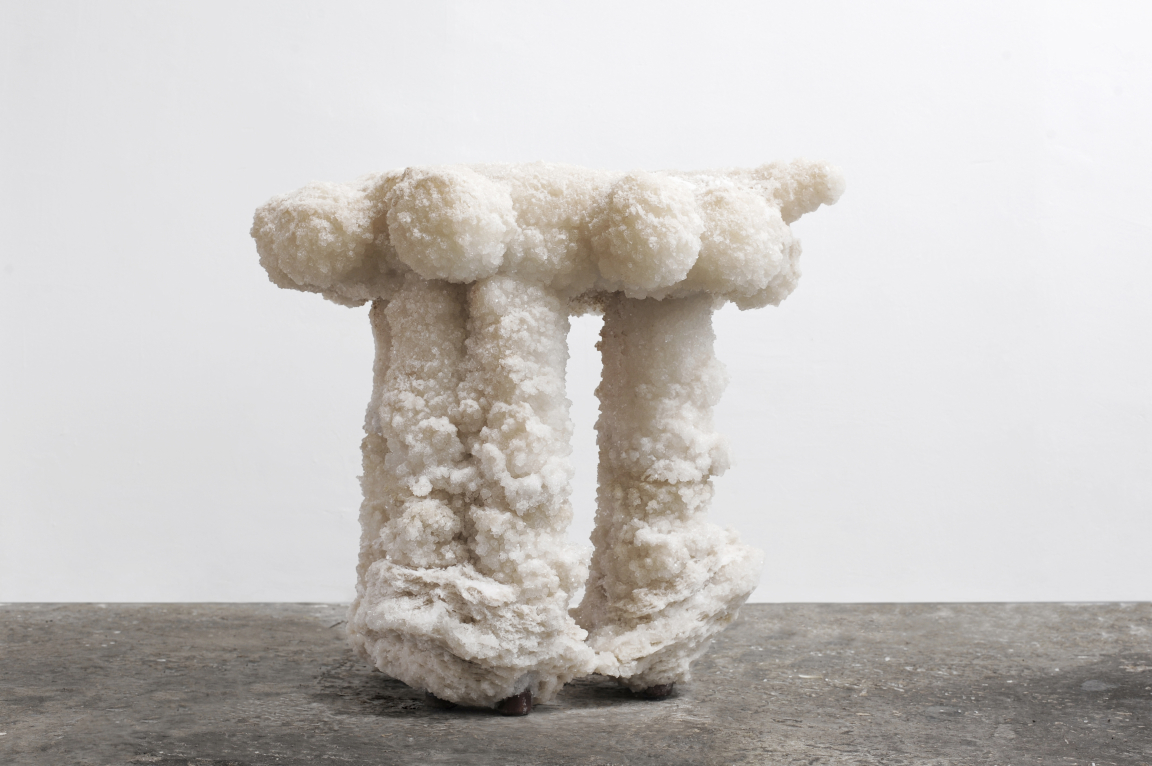
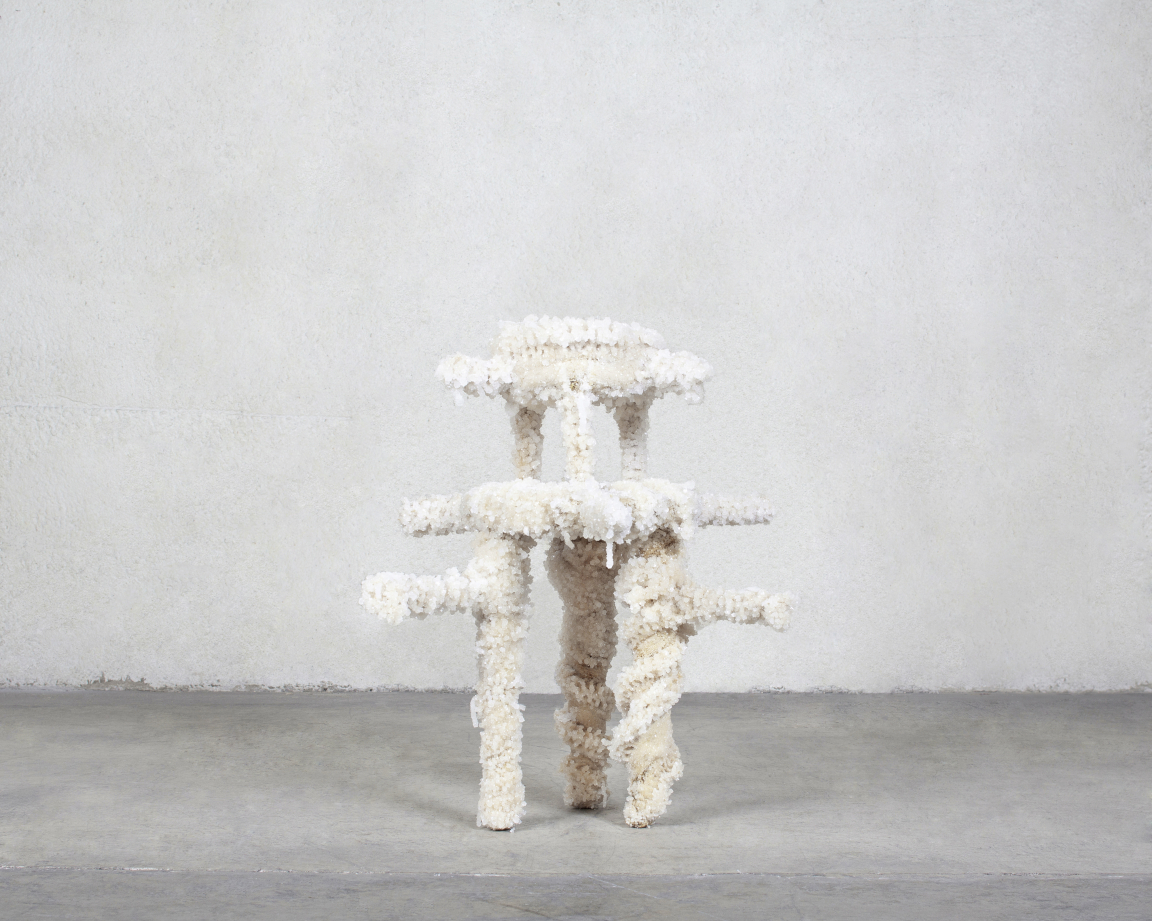
Talk us through the process. How are these pieces made?
I start in my studio where I’m researching (reading and writing my concept), sketching (on vegan paper I create by myself) then I start producing little models of the objects. When I’m satisfied with the concept and the aesthetics I start making the objects by collecting scraps of wood from garbage cans of carpenters' workshops and construct the objects using a vegan glue I concocted.
When the object is ready, the journey outside the studio accrues – 432 metres below the depths of the earth, at its lowest point – the Dead Sea. The objects are dipped under water and the crystallising process starts. I leave the objects underwater until I’m satisfied by the amount of salt that grow on them.
What surprised you about the project? What discoveries did you make?
That natural forces control the process although I think I’m the one who’s in charge. During the process of making the collection, I had a lot of "casualties" – so many objects were lost and acclaimed by the sea, the Dead Sea is unexpected.
I keep discovering new things every day, new techniques for production, new possibilities for applications of salt, new concepts that relate and can address the situation in this area. I have enough exciting materials for the rest of my career.
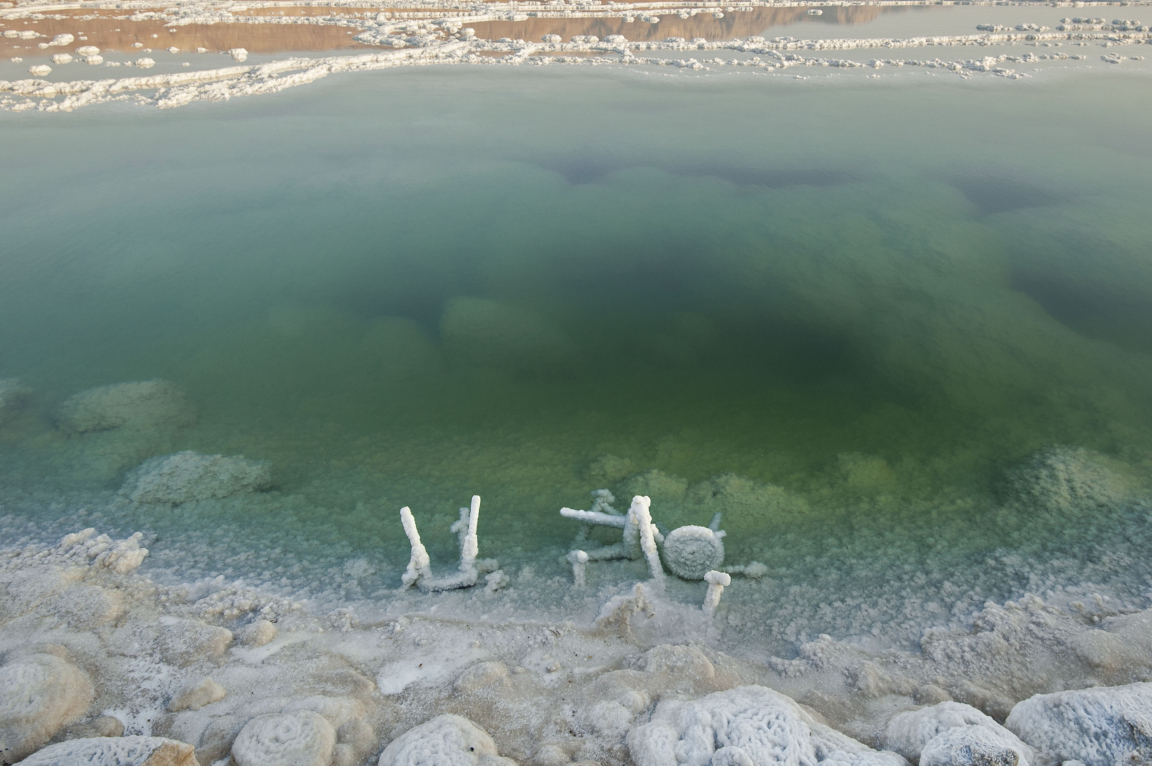
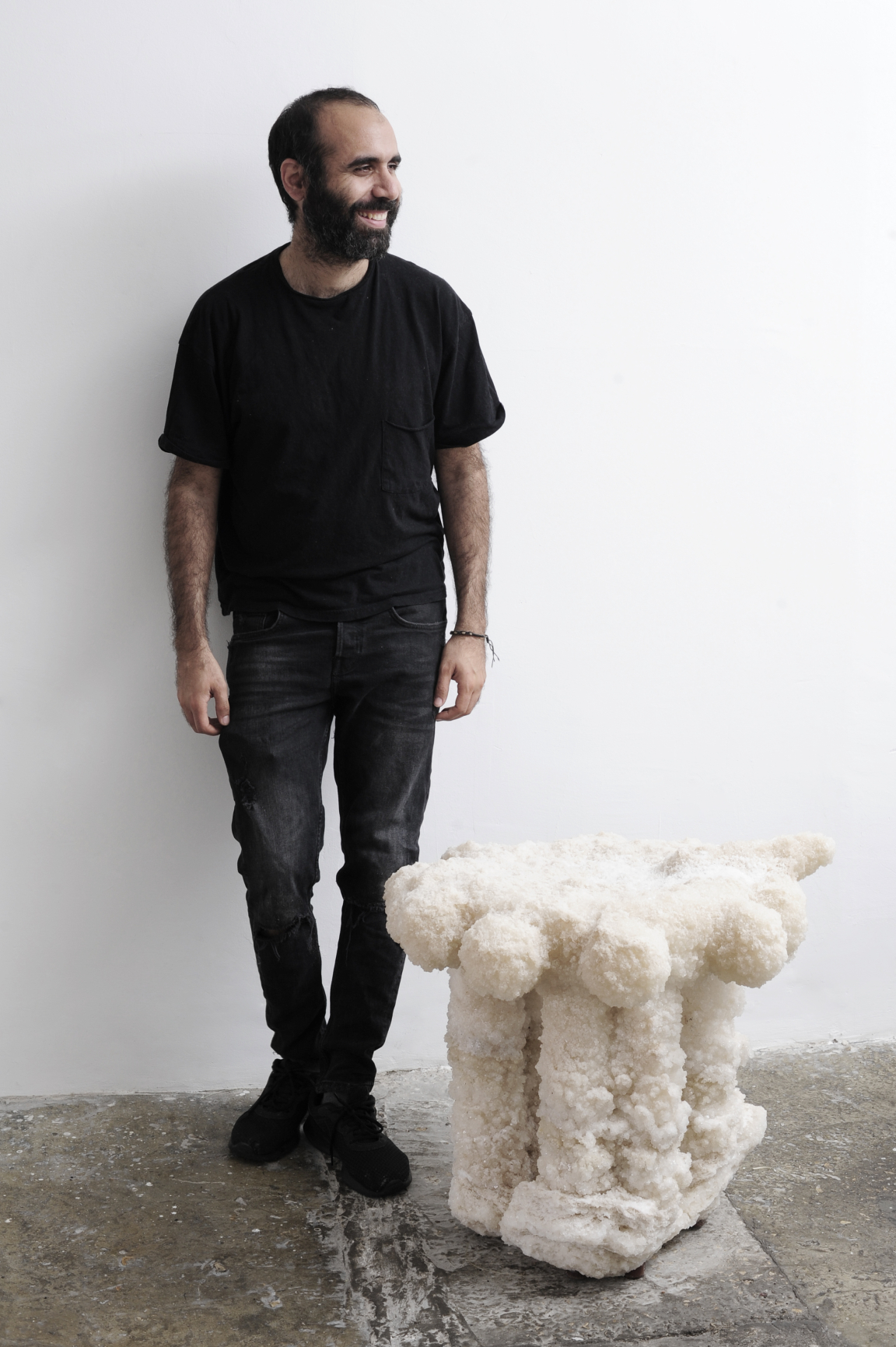
Sustainable materials are a hot topic. What else are you doing to address this?
I’m a vegan designer and I practice veganism in all aspects of life. It brings new adventures in the production process with every commission that comes.
Sustainable materials are a hot topic as they are highly in demand and consumers are more aware, but I see a lot of hypocrisy in the industry. If designers really care and to create the most sustainable design it’s fantastic and well appreciated, but if they are not vegan and they buy the flesh of animals with the money they earn from sustainable design, then the whole sustainability approach automatically fades away. The meat industry has a major environmental impact, it’s one of the largest contributors to climate change.
In my studio, I keep searching for new materials that are plant-based. In addition, I promote materials that are more moral and environmental-friendly. For example, I exhibited at Milan Design Week a range of textiles made from peace silk – an ethical process of silk production that expresses the principle of Ahimsa, an Indian philosophy with the premise of non-violence toward all living beings.
In traditional silk manufacturing techniques, silkworms are boiled alive inside of their cocoons, in Ahimsa Silks (or ‘peace silks’) one harvest the yarn after the pupae’s metamorphosis occurs, so basically the process allows the natural evolution of the silkworm and we collect the cocoons right after the moth as left.
This process is clearly more moral and, if the industry will embrace these kinds of practices, the sustainable stamp they place on their goods will be more accurate and genuine.



